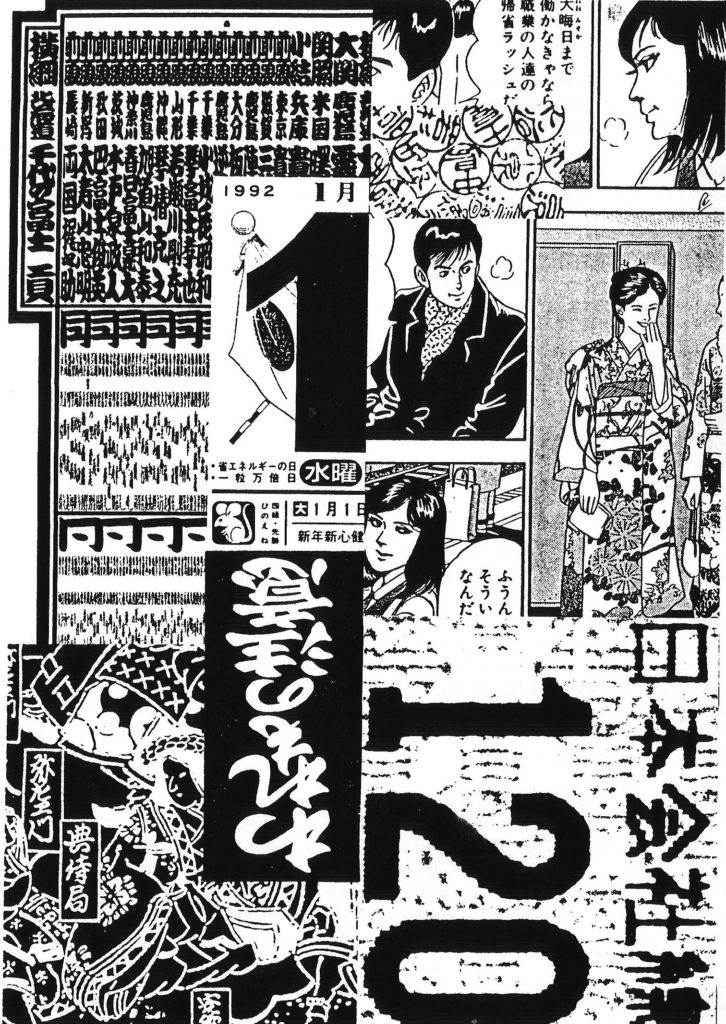Visions of Japan
Deep inside the Victoria & Albert Museum, amid the stark booty of marble and stone plundered from around the globe, lies ‘Visions of Japan’. The exhibition is composed of three rooms: each a movement in a powerful symphony of experience, each truly Japanese at the core.
Room One, COSMOS, by Kazuhiro Ishii.
Watchwords: Tranquility, Peace.
The symphony starts with a cool and soft tinkling of Koto music, and the smell of clean, fresh pine. Grids of wood stretch out along the walls, framing the massive Jodo-bashira pillar in the foreground. Behind the grids, invisible birds sing, and water flows in harmony. With a natural ease, the music swells and the pillar rotates, sweeping past the tattooed man and the fibre-optic Buddha. All then is silence, under the watchful eye of the master of the Pure Land. Amida Buddha himself stays half-hidden, behind the pinewood, glimpsed through holes barely finger-wide. We are boxed out…perhaos too gaijin for him. Past the muslin shrouded hearse, to the folding tea-house which parts like an origami flower when your back is turned.

Room Two, CHAOS, by Osamu Ishiyama.
Watchwords: Intensity, Overload.
The new movement begins in a blare of teeny-bop rock. This is the present, smelling of cherry blossom, and icon-driven. Select: GODZILLA. And there he is, forty stories tall with bad breath and a skin condition. He stands locked in a grimacing contest with Ghidrah of the three heads, picking his teeth with a plate glas window, stomping on a Tokyo made of plastic and computer circuits. Tesselated manga line the walls under gales of fishermen’s flags, leading you into a maze built from vending machines and car chassis, draped with fake garlands of leaves. Everything dispensers line the streets, straddled by Mr. Safety robots, ever waving their flags like cybernetic cheerleaders. Video games, karaoke and the Thundering Gate surround you, dwarfed by the Fuji-capped Sound Shrine, which roars Tokyo noises at you if you dare to spin the brass wheels. Between the shrines and the Shinto gates, fortunes lie in little numbered boxes, ready to be told. The wooden Gods wait to play oracle, but it’s third time lucky for me. I leave with a can of coffee, three brands of Sapporo, a not-so-good fortune and a high score on Gradius.
Room three, DREAMS, by Toya Ito.
Watchwords: Data, Totality.
Amd the final sonata in synthiKoto. This bare hall of plastic become a shrine to information, prominences of data rising and falling like solar flares. It is a digital urbana, a kazume world. The active air carries the shockwaves of facts, ongoing, unstoppable, relentless and engulfing. It is a voyage into cyberspace, a trip roaming across a digital metropolis. Reality fades like dead TV static.
“Visions of Japan” continues until the 5th of January, 1992.
Jim Swallow
